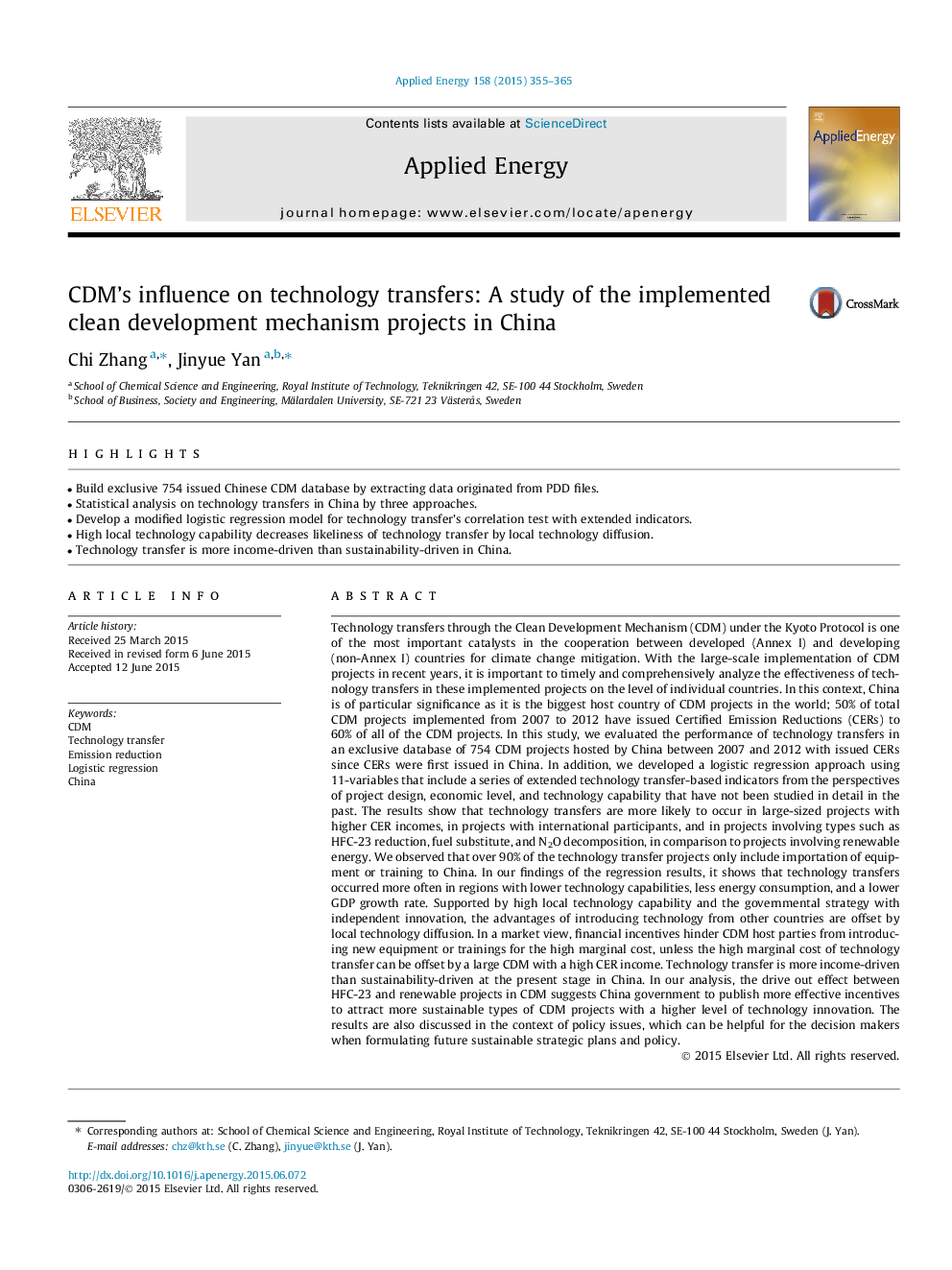| کد مقاله | کد نشریه | سال انتشار | مقاله انگلیسی | نسخه تمام متن |
|---|---|---|---|---|
| 6685737 | 501867 | 2015 | 11 صفحه PDF | دانلود رایگان |
عنوان انگلیسی مقاله ISI
CDM's influence on technology transfers: A study of the implemented clean development mechanism projects in China
دانلود مقاله + سفارش ترجمه
دانلود مقاله ISI انگلیسی
رایگان برای ایرانیان
کلمات کلیدی
موضوعات مرتبط
مهندسی و علوم پایه
مهندسی انرژی
مهندسی انرژی و فناوری های برق
پیش نمایش صفحه اول مقاله

چکیده انگلیسی
Technology transfers through the Clean Development Mechanism (CDM) under the Kyoto Protocol is one of the most important catalysts in the cooperation between developed (Annex I) and developing (non-Annex I) countries for climate change mitigation. With the large-scale implementation of CDM projects in recent years, it is important to timely and comprehensively analyze the effectiveness of technology transfers in these implemented projects on the level of individual countries. In this context, China is of particular significance as it is the biggest host country of CDM projects in the world; 50% of total CDM projects implemented from 2007 to 2012 have issued Certified Emission Reductions (CERs) to 60% of all of the CDM projects. In this study, we evaluated the performance of technology transfers in an exclusive database of 754 CDM projects hosted by China between 2007 and 2012 with issued CERs since CERs were first issued in China. In addition, we developed a logistic regression approach using 11-variables that include a series of extended technology transfer-based indicators from the perspectives of project design, economic level, and technology capability that have not been studied in detail in the past. The results show that technology transfers are more likely to occur in large-sized projects with higher CER incomes, in projects with international participants, and in projects involving types such as HFC-23 reduction, fuel substitute, and N2O decomposition, in comparison to projects involving renewable energy. We observed that over 90% of the technology transfer projects only include importation of equipment or training to China. In our findings of the regression results, it shows that technology transfers occurred more often in regions with lower technology capabilities, less energy consumption, and a lower GDP growth rate. Supported by high local technology capability and the governmental strategy with independent innovation, the advantages of introducing technology from other countries are offset by local technology diffusion. In a market view, financial incentives hinder CDM host parties from introducing new equipment or trainings for the high marginal cost, unless the high marginal cost of technology transfer can be offset by a large CDM with a high CER income. Technology transfer is more income-driven than sustainability-driven at the present stage in China. In our analysis, the drive out effect between HFC-23 and renewable projects in CDM suggests China government to publish more effective incentives to attract more sustainable types of CDM projects with a higher level of technology innovation. The results are also discussed in the context of policy issues, which can be helpful for the decision makers when formulating future sustainable strategic plans and policy.
ناشر
Database: Elsevier - ScienceDirect (ساینس دایرکت)
Journal: Applied Energy - Volume 158, 15 November 2015, Pages 355-365
Journal: Applied Energy - Volume 158, 15 November 2015, Pages 355-365
نویسندگان
Chi Zhang, Jinyue Yan,